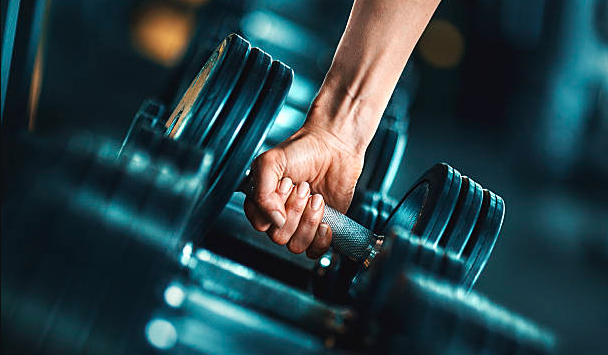There is potential for muscles to be stretched and tightened. That may sound like an oversimplification, but it’s not uncommon to witness gyms filled with individuals attempting to build muscle by haphazardly lifting dumbbells without properly engaging their muscles.
While some individuals may lack knowledge of proper lifting techniques, is there a widely recognized standard for correct technique? No, but the scientific community has made significant progress in this area.
A narrative research titled “Optimizing Resistance Training Technique to Maximize Hypertrophy: a Narrative Review” was recently published in The Journal of Functional Morphology and Kinesiology, just days before the start of 2024.
The research, co-authored by Jeff Nippard, a coach and content producer, sought to establish a consensus on effective resistance training techniques.
Study Uncovers Key Lifting Techniques for Muscle Growth
This study emerged from the uncertainty surrounding the recommendations for proper lifting techniques.
Lifters are often instructed about the significance of form, but there is no clear definition of what constitutes “proper technique.”
When it comes to hypertrophy, or muscle growth, the research emphasizes the importance of proper lifting technique.
This means executing movements in a controlled manner to effectively target specific muscle groups while reducing the risk of injury.
The study examined repetition tempo, range of motion, and exercise-specific kinematics (motion mechanics). However, there is a lack of published data on the latter, making it unclear whether rigorous reps or non-strict repetitions are more effective for muscle building.
Here’s what the study has revealed:
Repetition Tempo
Typically, every repetition of an exercise consists of both a concentric and eccentric phase. The concentric phase occurs when the muscle contracts to lift the weight. Let’s focus on the upward motion of a pull-up exercise.
The eccentric phase is characterized by the lengthening of your muscles and their ability to resist and reduce strain. This is the descending phase of a pull-up.
There is still no definitive agreement on the ideal method for muscle growth – concentric, eccentric, or a combination of both.
However, a narrative review has found that significant muscle gains can be achieved when repetitions are completed within a range of two to eight seconds.
During biceps training, it seemed that there was a preference for faster upward movements and slower downward movements, while leg training yielded varied results.
It is important to note that concentrics can have a powerful impact on muscle growth, making them valuable for hypertrophy.
On the other hand, it is crucial to perform eccentrics at a slow pace to ensure that the intended muscle is responsible for lowering the weight, rather than relying on gravity to do the work.
Improve Your Workout: Experiment with the 4-1-1-0 Tempo for Lifts

For your workout, consider incorporating a 4-1-1-0 tempo into your lifts. This tempo involves a four-second descent, a one-second pause, a one-second lift, and no pause before moving on to your next repetition.
4: The initial number represents the eccentric phase of the lift. In this example, it will take approximately four seconds to lower the weight.
1: The second number is currently at the lowest point of the rep. Just a moment, please.
1: During the concentric (or lifting) phase, it is important to take a moment to lift the weight back up.
0: Avoid pausing at the top of the rep before starting again. (Note: When your muscles become fatigued, it’s helpful to take a brief pause to continue with your set. However, it’s important to avoid pausing at the top to keep tension on your muscles.)
This tempo training strategy can be implemented right away for exercises such as the back squat and bench press.
However, not all lifts start in the eccentric phase. As an illustration, chin-ups start with a concentric pull.
Under those circumstances, start by taking a two-second breath, followed by a one-second break, and then gradually lower yourself for four seconds.
Based on this study, it has been found that increasing the duration of muscle strain during exercise, specifically between two and eight seconds, can potentially lead to the development of maximum muscle strength, especially during the eccentric phase.
Maximizing Muscle Growth: Range of Motion in Strength Training
There is often confusion between muscle length and range of motion, but this narrative review seeks to provide clarity on the difference, specifically in relation to muscle growth.
The concept of range of motion (ROM) pertains to the muscle’s capacity to achieve maximum movement during an exercise.
(Perform a dumbbell bench press by starting with your arms fully extended and lowering the dumbbells until they touch your chest.)
It is important to note that achieving full range of motion does not always take into consideration the length of the muscles, even though these concepts are sometimes mistaken for each other.
Based on a thorough examination of the available research, it appears that focusing on strengthening muscles in extended postures may yield better results for hypertrophy compared to training them in shorter positions with complete ranges of motion.
For instance, when performing a Bayesian curl, your biceps are fully stretched at the bottom and not at the peak.
Conclusion: For those focused on muscle growth, it is recommended to prioritize spending more time in the extended range of motion rather than limiting it. However, further investigation is required regarding this issue.
Read also: The Richest WWE Superstars of 2024 and Their Net Worth Exposed



